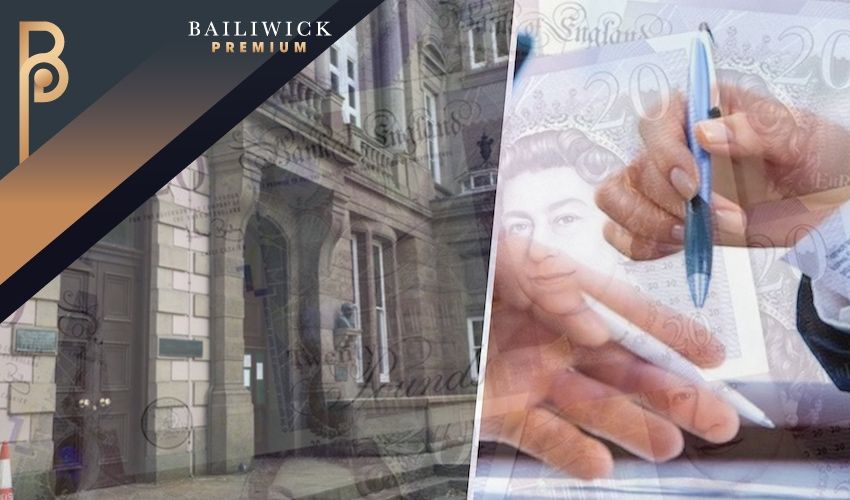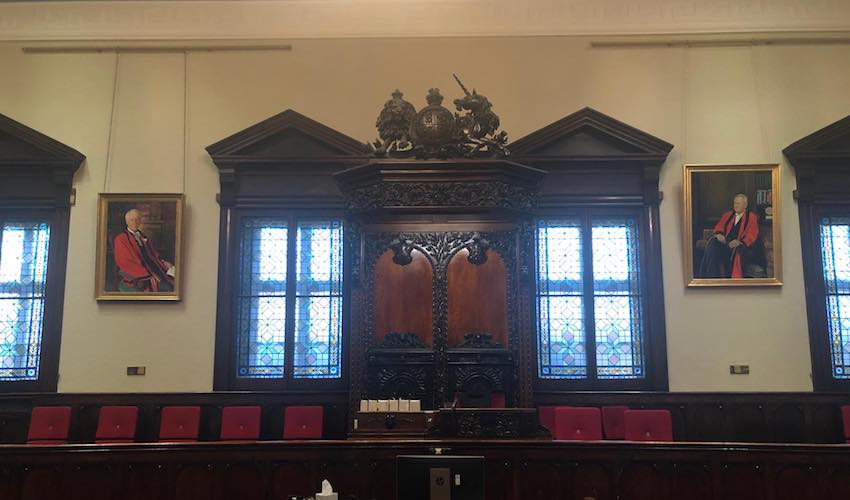


While the investment manager argued his client was “on good form” and able to give him instructions, others said the man was “sedated, on oxygen and could barely open his eyes”…
"Right-hand man" William Stephen O’Leary was recently ordered to repay more than £32m to the estate of a man for whom he had worked for over 30 years, before taking advantage of his declining health to transfer money from a purported charity trust to another structure aimed at benefiting himself and his family.
Express breaks down the lengthy and complex case stretching from Jersey to Panama and St. Kitts and Nevis…
After a 10-day trial in October 2021 before Deputy Bailiff Robert MacRae, sitting with Jurats Jerry Ramsden and Kim Averty, Mr O’Leary was found to have acted "dishonestly" and "fraudulently" and breached his duties as bare trustee for James Donald Hanson.
The Court therefore concluded that he should pay equitable compensation to the joint administrators of his estate and the company he owned.
Malcolm Cohen and Shane Crooks, along with Creditforce Limited had brought the case before the Royal Court, against five defendants, which included Mr O’Leary.
It concerned several issues, including the ownership of shares in Weatherwise Offshore Holdings Limited, a company incorporated in Jersey in 1994 and later renamed Arbitrage Research and Trading Limited (ARTL) in 2001, and the nature of the ‘SR Charitable Trust’ among other things.
The Court noted that in addition to having had a “busy professional life”, the private life of Mr Hanson, who passed away on 29 October 2014 at the age of 78, had been “complicated in more than one dimension”.

Pictured: The court heard Mr O'Leary was an investment manager when he met Mr Hanson.
The court heard that the two men met in the late 1970s and had a “continuous professional relationship” for over 30 years. Mr O’Leary said he spoke to Mr Hanson almost every day and that he would have regarded him as his “right-hand man”.
Both Mr O’Leary and his wife were listed as beneficiaries in Mr Hanson’s will when he died.
He was a Director for Creditforce, which Mr Hanson owned, from 2008 until he was removed by the joint administrators. Four years prior he had been appointed as Director for ARTL.
Around 2008, Mr Hanson also gave him a general Power of Attorney, giving him the ability to make decisions and enter transactions on his behalf.
In September 2004, Ms R, a US resident who had acquired shares in ARTL as a “nominee” for Mr Hanson or Creditforce to maintain the UK tax benefit which flowed from the shares being owned by a non-UK resident, purported to settle the SR Charitable Trust. At the time, the management accounts show that it held about £25m.
The Court found that both Mr Hanson and Mr O’Leary had played central roles in setting up the trust.
Mr O’Leary claimed that at the time, he believed Ms R was the “true Settlor of the Trust” - a view he didn’t change until he saw material from Mr Hanson’s computer that was uncovered for the case.
When questioned by the Court as to why Mr Hanson had described him as “the architect and project manager” of the Trust in correspondence with ARTL’s Directors, Mr O’Leary said it was banter and that Mr Hanson must have been drinking alcohol at the time of writing.
The Court also noted that despite believing Ms R was involved in the Trust, he never met her or contacted her in the decade the trust existed.

Pictured: The Trust was presented to be a charitable one, but there was “strong evidence” that Mr Hanson continued to regard both ARTL and the Trust as his assets.
Mr O’Leary said he put forward his name to be a trustee because he had worked with ARTL for many years and Mr Hanson needed someone to be a trustee. He said he had always had an interest in charities and was a trustee of a several other trusts in the UK, including the Don Hanson Charitable Foundation.
Whilst the Trust was presented to be a charitable one, the Court noted there was “strong evidence” that Mr Hanson continued to regard both ARTL and the Trust as his assets.
According to a Stuart Wall, a very close friend of Mr Hanson who was part of the board he set up to ensure he would die 'neatly', Mr Hanson saw the Trust as “one of the sources of his wealth which fell to be distributed among those whom he wished to benefit from his estate”.
The Court also noted that throughout the 10 years of the trust’s life, the total value of the charitable distributions only amounted to £22,000 - despite the trust being worth around £30m.
The distributions were funded from assets available to the trustees at the outset, and Mr Hanson said they should be regarded as an ‘expense of the Trust’.
Some of the transactions from the trust involved nearly £400,000 worth of transfers to Mr Hanson’s then-girlfriend to pay for the refurbishment of her home in England.
Mr O’Leary denied having permitted Mr Hanson to use ARTL as his 'piggy bank' - but the Court concluded that he did indeed, adding that Mr Hanson was “robbing ARTL, which was supposed to be held for charitable purposes, to pay [his girlfriend] substantial funds to refurbish her house”.
Mr O’Leary however attempted to justify the payment, saying Mr Hanson was owed the money for the work he had done as investment adviser to ARTL, which the Court said he “made up”.

Pictured: The case was the focus of a 10-day trial before the Deputy Bailiff, Robert MacRae, and Jurats Jerry Ramsden and Kim Averty.
The Court concluded Mr Hanson and Mr O’Leary had never intended for the trust to be a “genuine charitable trust” and shared a common intention to “mislead” HMRC over the nature of the transaction they had entered into.
As for the other two trustees, the Court said there was not enough evidence they intended to give “a false impression” of the nature of the Trust.
They said there was neither evidence of “a genuine charitable intention” at the creation of the trust, or of such an use of the trust and concluded it was invalid.
This meant that from 2011 to 2014, when Mr O’Leary was the sole trustee, he held the assets of the Trust on bare trust for Mr Hanson and Creditforce.
Mr O’Leary claimed he was in fact “a trustee of a bona fide charitable trust with various duties imposed upon him”, which the Court concluded he had an incomplete understanding of.
According to the plaintiffs, Mr O’Leary breached all of his duties, including acting with due diligence, observing the “utmost good faith” and preserving and enhancing the value of the trust property.
Mr Hanson fell ill in late 2013 and died approximately a year later. During this period, Mr O’Leary, by then the sole trustee of the Trust, considered transferring the assets of the Trust to a foundation in St. Kitts and Nevis and, ultimately, by a series to steps commencing on 3 July 2014, advanced the assets of the Trust to a Panamanian private interest foundation, namely the Arbitrage Research Foundation S.A. (the Second Defendant).
Mr Wall said in the year before his death, Mr Hanson was in a “serious state of mental and physical decline” and he sometimes forgot to turn up at board meetings or for flights.
He said Mr Hanson experienced a “period of rapid decline” after being diagnosed with a brain tumour in July 2014 and was “approaching complete incapacity” by August 2014.
Meanwhile, Mr O’Leary said Mr Hanson was “on good form and able to express himself clearly”, and even gave him instructions a few days before his death. According to Mr Wall, Mr O’Leary’s account was entirely untrue – at the time, Mr Hanson was “sedated, on oxygen, and could barely open his eyes”.

Pictured: The Court found that Mr O’Leary had not advised Mr Hanson of the plans to form a St. Kitts Foundation in October 2013.
Mr O’Leary said he wanted to terminate the trusteeship because of the “poor conduct” of the then administrators, Herald Trust, his wish to retire as trustee, and his concerns about his personal tax position.
The Court rejected both latter arguments and noted how he never took advice from a specialist in charitable trusts or from advisors based in Jersey. In fact, his first port of call was a firm specialised in wealth and asset protection in London.
The Court found that Mr O’Leary had not advised Mr Hanson of the plans to form a St. Kitts Foundation in October 2013.
Mr O’Leary said they had discussed the advice about the new foundation, but previous statements showed he had said Mr Hanson had not been involved at any moment, whilst questions from Mr Hanson’s about cashflows show he didn’t exactly know what was going on.
The Court concluded he hadn’t told him anything about the St. Kitts Foundation or the subsequent Panamanian one at the time he was setting them up and taking advice upon them.
Documents signed at the time the St. Kitts foundation was formed show Mr O’Leary was to be its beneficial owner and were not compatible with a charitable trust.
Other documents showed he was appointed as the protector of the foundation, which an attorney qualified in the law of St Christopher and Nevis described as “an attempt from Mr O’Leary to control every aspect of this foundation, or every meaningful aspect of this foundation, through powers that even if it was an incorrect reference to a protector versus a guardian, the foundation legislation does not allow a guardian to have this wide range of power”.
The attorney concluded the foundation was established for “family advancement” and not charitable purposes.
The initial trust was eventually wound up on 3 July 2014, with the foundation then migrating to Panama in May 2015.
Mr O’Leary said he tried to get a copy of the regulations of the foundation but wasn’t able to. He accepted that a “prudent charitable trustee” would have sought to retain a copy of the constitutional documents relevant to the Panamanian Foundation at the time he retired as trustee of the trust.
According to a Panamanian lawyer, the foundation was a Private Interest Foundation and not a charitable institution, as she noted there was nothing in the charter of incorporation suggesting “any connection with charity”.
The foundation was dissolved In December 2020 with the assets being distributed to the beneficiaries identified at the outset.

Pictured: Mr O'Leary accepted he had no idea whether the original council members had “any knowledge or experience” of administering a charity worth £30 million.
Mr O’Leary accepted in evidence that he had no idea whether the original council members had “any knowledge or experience” of administering a charity worth £30m, particularly in circumstances where they resided in Europe and the Foundation was in Panama.
The Court wrote said they found it “surprising” that after Mr O’Leary and Mr Hanson had built up ARTL over the course of 10 years, the former would “effectively give it away to people whom he did not know in circumstances where there was so little documentation”.
They also questioned the “huge fees” of £1.8m Mr O’Leary agreed to pay to the advisers who helped move the trust, saying they reflected the “bona fides” of the people he selected.
The Court heard one of the former council members is refusing to answer Mr O’Leary’s calls and dissolved the foundation without telling him, whilst another was sentenced to three years in prison for offences of dishonesty in Liechtenstein in 2019.
The Court “unhesitatingly” found that Mr O’Leary had breached his duties as bare trustee by transferring the assets of the Trust to the Panamanian foundation.
“We have no doubt that Mr O’Leary acted dishonestly and, therefore, fraudulently when he breached his duties as bare trustee,” they added.
They found he had, among other things, concealed his actions from Mr Hanson and Creditforce; took advantage of Mr Hanson’s declining health to carry out the transactions and instructed experts who he knew had “no experience or skills” in looking after charity money – instead selecting advisers who specialised in asset protection.
The Court therefore concluded he should pay the plaintiffs “equitable compensation”, based on the value of ARTL at the time it was misappropriated, minus the required adjustments and with a compound interest of 5.3%, making a total of £32.7m.
Comments
Comments on this story express the views of the commentator only, not Bailiwick Publishing. We are unable to guarantee the accuracy of any of those comments.